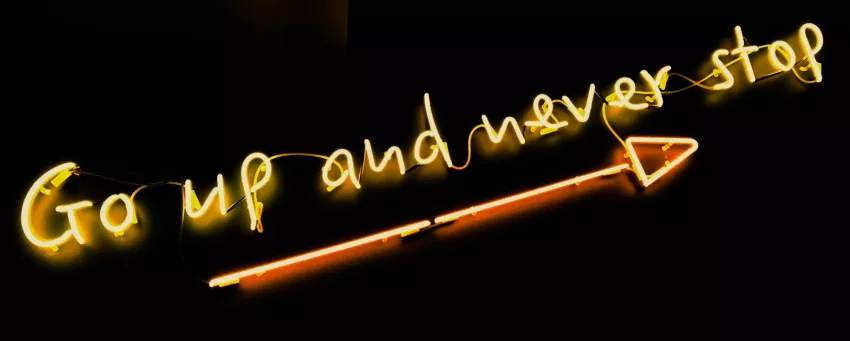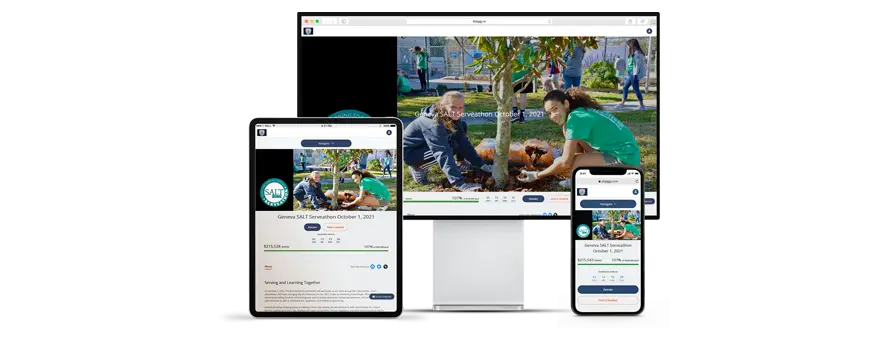
You’ve hosted a fundraising event and want to determine how successful the event was for your charitable cause. As with any marketing program, there is not one solid metric or indicator that tells you if your event was a success. Nor is there one stakeholder that determines whether or not the event was successful. There are many factors to consider in order to come up with a thorough evaluation of your fundraising event.
Read on to learn about establishing event goals and the four key metrics to determine how successful your event turned out to be.

What We’ll Cover:
- Establish Goals and Objectives Prior to the Fundraising Event
- 4 Metrics to Evaluate Fundraising Event Success
- Financial Metrics – Did You Make Enough Money?
- Event Attendance – Did You Meet or Near Event Capacity?
- Spreading Awareness – Did You Reach New Constituents?
- Event Retention – Was the Event Fun? Will Participants Come Back Next Year?
- Creating Event Recap Reports
- DoJiggy is here to help with easy, donor-friendly software for all of your fundraising events
Establish Goals and Objectives Prior to the Fundraising Event
When you are in the initial stages of planning your nonprofit fundraising event, be sure to establish goals and objectives for the campaign. How much money do you want to raise? What other outcomes do you want from your event? You don’t want to leave these to chance. You should have your eye on the prize throughout the entire event planning phase to help ensure success.
After the event, the first thing you’ll want to do is review the goals and objectives you established prior to hosting your event. See if you’ve accomplished what you’d hoped and determine how to do better next time. If you did not outline metrics for success prior to your event, you can still use these guidelines to help you evaluate your event and plan fundraising strategies and goals for future events.

4 Metrics to Evaluate Fundraising Event Success
Here are some metrics to consider when evaluating the success of any fundraising event:
- Did you make enough money?
- Was there enough participation at the event?
- Did you reach new constituents?
- Did participants return and will they be returning again next year?
Financial Metrics – Did You Make Enough Money?

Fundraising events start with one main goal – to raise money for a cause. Did you raise the amount of money you hoped to raise? To answer this question completely, you need a complete understanding of all proceeds and expenses as well as donations raised. Hopefully, you started the event with a fundraising budget and have compiled all the financial details. How much did you raise through donations and pledges? How much money did you save in the form of in-kind donations? How much did you make from ticket sales or food and beverage sales? Did you have a raffle fundraiser, silent auction, or another secondary event? Were you able to secure large investments from local businesses in the form of sponsorships?
Along with campaign revenue, summarize event costs and compare these costs to your budget. What were the hard costs of your event including logistics (i.e. tent rentals, tables, permits, decorations, food, etc.), plus event entertainment, paid labor, promotion costs, and your staff’s time and effort planning the event? Did you stay within budget? Were you able to offset costs through building partnerships and receiving in-kind donations? If not, consider this for next year. Understanding your event expenses is key to determining your return on investment (ROI).
Event Attendance – Did You Meet or Near Event Capacity?

Did you get as many participants or overall attendance as you wanted? With a gala dinner or charity golf tournament where you have registrations, this number can be easily tallied and compared year after year for annual events.
But what about a free crowdfunding campaign like a walk-a-thon fundraiser? How do you know the exact turnout? The best answer here is to track participant registrations and note the number of sponsors and partners brought on board to support the event. Take pictures and estimate if you don’t have hard numbers. It’s great to include a photo of all the people gathering together at your fundraising event to support your cause as part of your Annual Fund report. You can also set up kiosks where event attendees can sign up to win prizes or fill out event surveys. Reporting these numbers provides additional information about the type of audience you attracted, as well as getting feedback on your event.
Spreading Awareness – Did You Reach New Constituents?

Success is not only about numbers. It’s also about spreading awareness for your cause and finding new supporters. Estimate how many people you reached through your fundraising event promotional efforts, including media outreach. Make sure to print copies of all promotional materials and press coverage to keep on file and include them in your event recap report. Ask your team:
- How were promotional materials distributed?
- Did you have flyers posted on community bulletins?
- Did you send emails and social media blasts inviting people to your event?
- Did you run ads in local newspapers or online?
- What about bus signage and radio announcements?
- Did you get any press coverage, radio mentions, or listings on event calendars?
- Did you have help from sponsors, volunteers, and vendors via their social networks?
- Are there new opportunities for next year’s outreach efforts?
Spreading awareness for a cause can often be most successfully completed with a peer-to-peer fundraising campaign. After all, this is the whole purpose behind these campaigns – having your supporters reach out to their network via social media and other channels. Our P2P crowdfunding software can make these events hugely successful.
Event Retention – Was the Event Fun? Will Participants Come Back Next Year?

What was the overall perception of the event? Did people have fun? This is an important determinant of event success. If people had fun, they’ll likely tell their friends about it and ask them to join next year. Event retention is key to an event’s success, as you don’t want to start from scratch each year in finding event sponsors, volunteers, and event participants.
Make sure to interview people to find out what they thought about the event. You do not only want the perspective of event planners and staff. Interview all parties involved in the event, including event attendees, workers and volunteers, vendors, sponsors, and other key stakeholders. What did they like about the event, and what things did not work? How can you improve the event in the future? Don’t forget to find out how they learned about the event, as this could help you determine your most effective promotional methods. After evaluating all of these questions, identify the most successful things and what you can improve on. Analysis of your event can help you plan better for the future.
Creating Event Recap Reports

This may not seem like a critical part of event evaluation. After all, the event is over, so you may be wondering why you’d want to spend time creating a recap report. But this is absolutely one of the most important parts of event evaluation. You want to list detailed information about the planning process and every happening during the event, from set-up through take-down. Items to include:
- Vendor lists and contact information
- Copies of contracts
- Lists of entertainment and how they were perceived
- Detailed maps outlining where everything was located, from sponsor expo areas to stages to beer tents and bathrooms
- Event sponsors (these will be the first groups you reach out to next year)
- An explanation of benefits provided to sponsors so you can satisfy and improve on them next year
- How did you secure volunteers and what was the turnout like?
- Interviews and notes from your post-event meetings
- Include photos in your recap reports, quotes from happy sponsors, vendors, and event attendees
- Include copies of ads, flyers, and promotional materials
- Be sure to include press clippings to show any press coverage received leading up to and during the event
Create a detailed report outlining the things that were successful and intended improvements for next year. Be sure your nonprofit CRM and donor management software are updated with event information. You may not realize it now, but this information will become invaluable as you begin your planning process in the future, especially if key players are not available to help out next year.
DoJiggy is here to help with easy, donor-friendly software for all of your fundraising events




